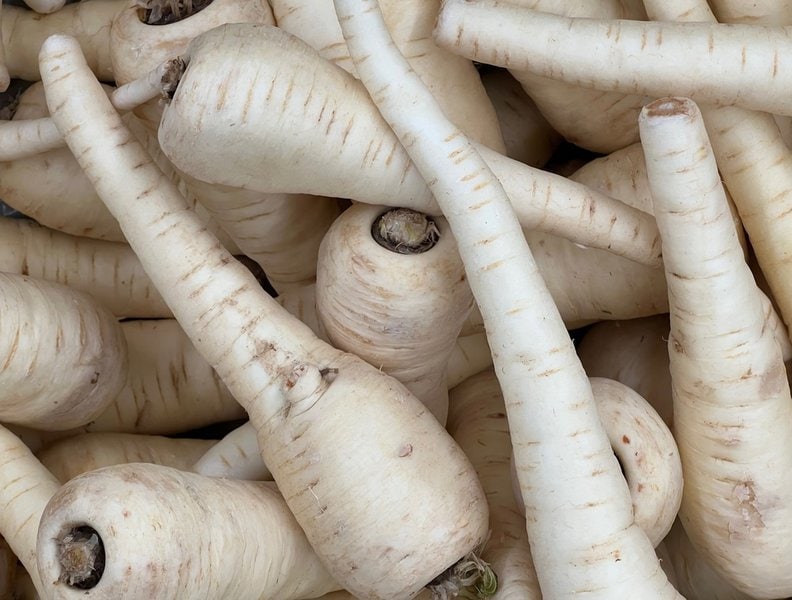We all love our furry friends and want to ensure they get the best care possible. Part of that includes making sure they’re getting the proper nutrition. If you love veggies, you may wonder which ones are safe to share with your doggie. So, can dogs eat parsnips?
Parsnips are a nutritious vegetable that offers many benefits for dogs. They are packed with nutrients, including fiber, magnesium, potassium, and vitamins A and C, all of which are beneficial to your dog’s health. In addition, parsnips can aid digestion and help keep your dog’s digestive system healthy.
So, it is clear that parsnips are safe for dogs to eat and beneficial in many ways. But knowing the safe ways to prepare parsnips is essential so they’re not dangerous for your pup. This article will discuss the benefits and side effects of feeding parsnips to your pup. We will also give you some cooking tips to make this veggie yummier for your pup. But first, let’s review the reasons to include parsnips in your doggie’s diet.
Are Parsnips Safe For Dogs?
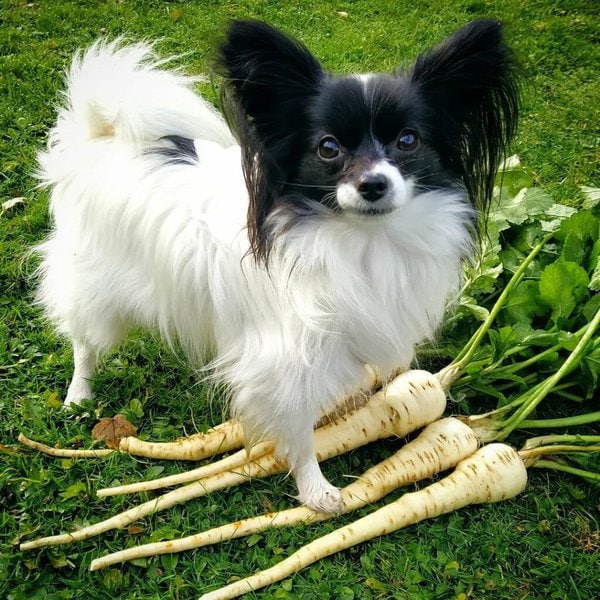
Yes, parsnips are generally safe for dogs to eat. But it’s essential to feed parsnips to dogs in moderation. As with any food, you should avoid giving your dog too much at once.
When feeding parsnips to your dog, be sure to cut them into small pieces so they can easily chew and digest them. Also, avoid feeding your dog moldy or spoiled parsnips, as these can cause stomach upset.
Here are three top reasons you should include parsnips in your dog’s diet:
Good Source Of Fiber
Parsnips are a good source of fiber for dogs. Fiber is essential for keeping your dog’s digestive system healthy and preventing constipation. Parsnips are a great way to add fiber to your dog’s diet. Just be sure to cook them before feeding them to your pet because raw parsnips can be challenging for dogs to digest.
Good Source Of Vitamins And Minerals
Parsnips are a good source of vitamins and minerals for your furry friend and can also help their digestion. Parsnips contain magnesium and vitamins, namely A and C. These nutrients are essential for your dog’s health.
Parsnips are also a good source of potassium, which can help to regulate blood pressure and fluid balance in the body. Additionally, parsnips are a low-calorie vegetable, making them an excellent choice for dogs trying to lose or maintain a healthy weight.
Parsnips Can Help Prevent Cancer

Parsnips contain apigenin, which has been shown to have anti-cancer effects in animals. For example, in one study, rats given apigenin had significantly fewer cases of lung cancer than those who were not.
While more research needs to be done to determine whether parsnips may help prevent cancer in dogs, the preliminary evidence is promising. If you’re looking for a way to help your furry friend stay healthy, adding parsnips to your canine’s diet may be a good idea.
Boosts Metabolism
Parsnips are a good source of dietary fiber vital to maintain a healthy digestive system. Fiber helps to bulk up stools and promote regularity. Parsnips also contain prebiotic fibers that support the growth of healthy gut bacteria.
Prevents Kidney Diseases
Kidney disease is a condition that can be caused by high blood pressure and diabetes. Feeding your pup foods high in potassium, like parsnips, can help reduce the risk of developing kidney disease.
Precautions
While parsnips are generally considered safe for dogs, it is always best to consult a veterinarian before feeding new food to your pet.
Of course, as with any new food, it is also important to slowly introduce parsnips to your dog and in moderation. Start with a small amount and see how your dog reacts. If there are no adverse reactions, you can slowly increase the number of parsnips in your dog’s diet.
Some dogs may be allergic to parsnips, so it is essential to watch out for adverse reactions. Other vegetables can provide similar benefits if your dog does not tolerate parsnips well.
How Many Parsnips Can Dogs Eat?
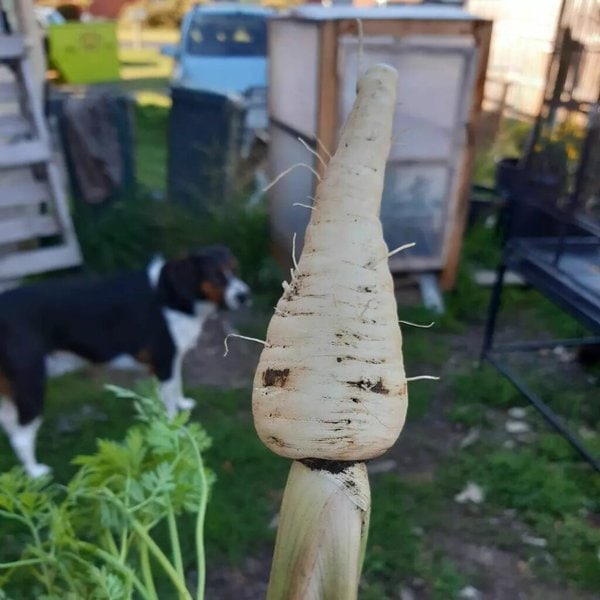
Parsnips are safe for dogs to eat, but only in moderation because they are high in sugar and fiber. So, limiting your dog’s intake to half or one parsnip per day is best.
The best way to determine how many parsnips you should feed your pooch is the 10% rule. Your dogs’ snacks and treats should make up about 10% of their daily calorie intake.
Parsnips make a healthy and crunchy snack to feed your doggie, but consider the following risks when incorporating parsnips into your fur friend’s diet.
Adversely Affect Blood Sugar
Despite its status as a low-carb food, parsnips have a slightly higher glycemic index (GI). So, if your puppy has metabolic problems such as diabetes, consult your veterinarian before giving your dog parsnips.
Gastrointestinal Distress
One of the most significant risks of feeding parsnips to dogs is the possibility of gastrointestinal issues. While most dogs can digest parsnips without problems, some dogs may experience diarrhea or vomiting after eating parsnips.
If your dog has gastrointestinal issues after eating parsnips, it’s important to contact your veterinarian as soon as possible.
Potential Choking Hazard
Another risk to consider when feeding parsnips to dogs is the possibility of choking. Parsnips are a root vegetable, which means they have a hard, crunchy texture.
This can be dangerous for dogs if they try to chew on whole parsnips and could lead to choking.
It’s crucial to always supervise dogs when they’re eating parsnips. Also, cut them into small pieces before giving them to your pet.
Can Dogs Eat Cooked Parsnips?
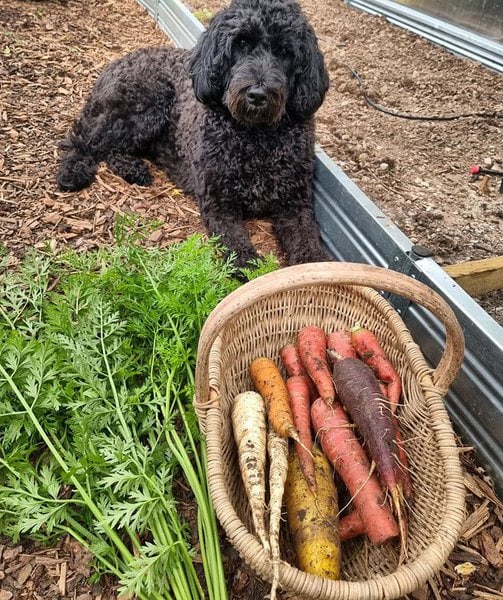
Yes, dogs can eat cooked parsnips, but ensure to cook the parsnips plain. Avoid adding salt, spices, or other seasonings. Dogs can safely eat plain cooked parsnips as a healthy and nutritious treat.
Parsnips can be cooked in many ways, including boiling, baking, roasting, or pureeing.
Boiled Parsnips
Boiling is the simplest way to cook parsnips for dogs. Add them to a pot of boiling water and cook until they’re tender. You can then mash them up or cut parsnips into small pieces for your dog to enjoy.
Baked Parsnips
Baking parsnips are another easy option. Simply place them on a baking sheet and bake at a moderate temperature until they’re soft. Again, you can mash them or cut them into small pieces for your dog.
Roasted Parsnips
Roasting parsnips is a bit more time-consuming, but it can be worthwhile. Coat the parsnips in a bit of olive oil and roast them in a preheated oven until they’re fork-tender. Once they’re cooked, let them cool before giving them to your dog.
Parsnips Puree
If you want to get creative, you can even puree cooked parsnips to make your pup a healthy and delicious treat. Add cooked parsnips and a bit of water to a blender or food processor and blend until smooth. You can then serve the pureed parsnips as is or add them to your dog’s food.
No matter how you cook them, parsnips make a great healthy treat for dogs. Always avoid adding salt, spices, or other seasonings to keep parsnips safe and nutritious.
Can Dogs Eat Parsnip Peelings?
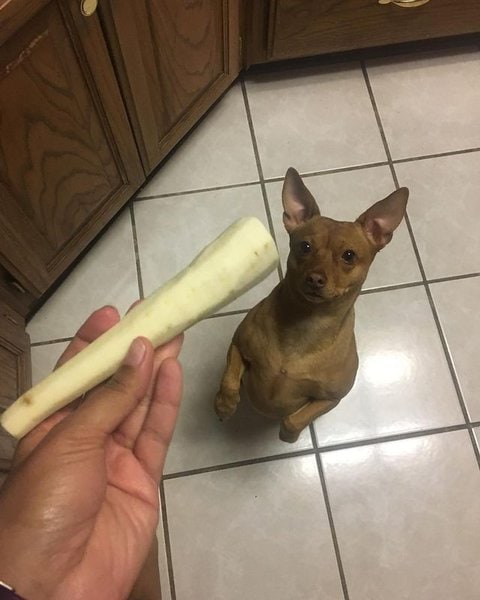
Yes, dogs can eat parsnip peelings. You can feed your pup the peelings separately, or you can feed them the parsnips with the skin on.
Parsnip peelings are full of nutrition, which is an excellent way to boost your pup’s nutrients. If you plan to feed parsnip peelings to your pup, always ensure to wash them first to get rid of any dirt or pesticides, which can be harmful to your little friend.
Can Dogs Eat Parsnips With Honey?
No, dogs shouldn’t eat parsnips with honey. Even though honey is not toxic to dogs, it is still not healthy for your pooch’s digestive system.
Dogs shouldn’t eat parsnips with honey because honey contains high amounts of sugar and fat. The sugar packed in honey can lead to poor oral health and weight gain, which isn’t what you want for your furry friend.

